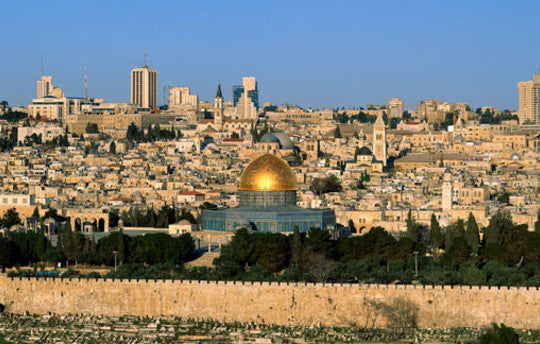Your Cart is Empty

‘The whole world is a narrow bridge and the most important thing is not to be afraid,’ said the eighteenth-century Polish rabbi Nahman. The whole world is also a global village and in the small state of Israel you can find Jewish immigrants from 127 countries all round the world. They started to return in 1882 after two thousand years of exile in the diaspora, and they brought with them their traditions, languages and, of course, their very different traditions of music.
The waves of immigration started mainly from Eastern Europe, but also from Yemen, North Africa and Asia. With the declaration of the State of Israel in 1948 the influx escalated, and there were countries from where the whole Jewish community (or what remained after the Holocaust) came as one to their old-new homeland. In the years since then, Jews have continued to arrive, most recently, thousands have come from the former Soviet Union and Ethiopia.
An Israeli born in Israel is called a sabra (literally, the fruit of the prickly pear cactus – prickly on the outside and sweet inside) and conventional wisdom has it that if, on a Friday evening, you put a guitar in a sabra’s hand, a harmonica in their mouth and add an accordion, song will fill the air. Those songs, born of the youth and kibbutz movements, are known in Hebrew as Shirei Eretz Israel Hay’shana Ve Hatova – Songs of the Good Old Land of Israel. Many of them are set to Slavic and Russian melodies adopted by the earliest Israeli songwriters from Eastern Europe.
Until quite recently it was hard to find an Israeli musician dedicating him or herself to Yiddish or Ladino songs, although some of Israel’s best singers have released occasional albums in Yiddish (Chava Alberstein) or Ladino (Yehoram Gaon). However, in the last few years more and more Israeli musicians have gone back to their parents’, or even grandparents’, heritage and language, and recorded the “old” music with a new approach. Such artists include Yasmin Levy and the Kol Oud Tof Trio.
From the 1930s to the 50s, oriental singers (from other Middle Eastern or North African countries) began to play an important part in Israeli music. The Jews in Yemen had a very rich musical tradition. They sang on every occasion – in moments of sorrow and joy, songs of everyday life and prayer.
In contemporary Israel, Yemenite Jews are amongst the leading popular artists. The late Ofra Haza was the best-known singer outside Israel, and current stars include Zohar Argov and Noa (Achinoam Nini), who combines elements of jazz with a marvellous voice and musicality.
In the 1980s and 90s, a new sabra generation started to record “hard core” Middle Eastern-style music, often cheaply produced on small independent labels, as an alternative rock and pop. Many major Israeli artists started their careers on the indie labels, including Chaim Moshe, Sarit Hadad and the Israeli-Arab violinist and singer Samir Shukri.
For many artists, a fusion of Eastern and Western elements is a natural part of their creative processes and family history. Ehud Banai and his cousin Me’ir Banai offer rhythms and melodies from their Iranian heritage. Yehuda Poliker – one of the most popular rock artists in Israel – adds his Greek roots to his music, while Miki Gavrielov, who has written some of the best-known Hebrew songs, incorporates his Turkish ancestry.
/p>
Other notable fusionists include the violinist and oud player Yair Dalal, who has forged a successful mix of Jewish, Arabic and other traditions, and Tea Packs, who with leader Kobi Oz, create an “oriental” pop.
The most significant fusion group, however, active for the past thirty or so years, are Habrera Hativeet (The Natural Gathering). They shook up Israeli music in the 1970s by forging a mix of Moroccan, Yemenite and Hassidic songs, and over the years have added influences from Africa, blues and classical music.
Israeli jazz, pop and rock are also imbued with an eclectic, multicultural approach. The two best-selling albums of the last few years have been by the innovative Idan Raichel’s Project. These combine beautiful Israeli love songs with Ethiopian elements plus rhythms from Jamaica, South Africa and even Suriname.